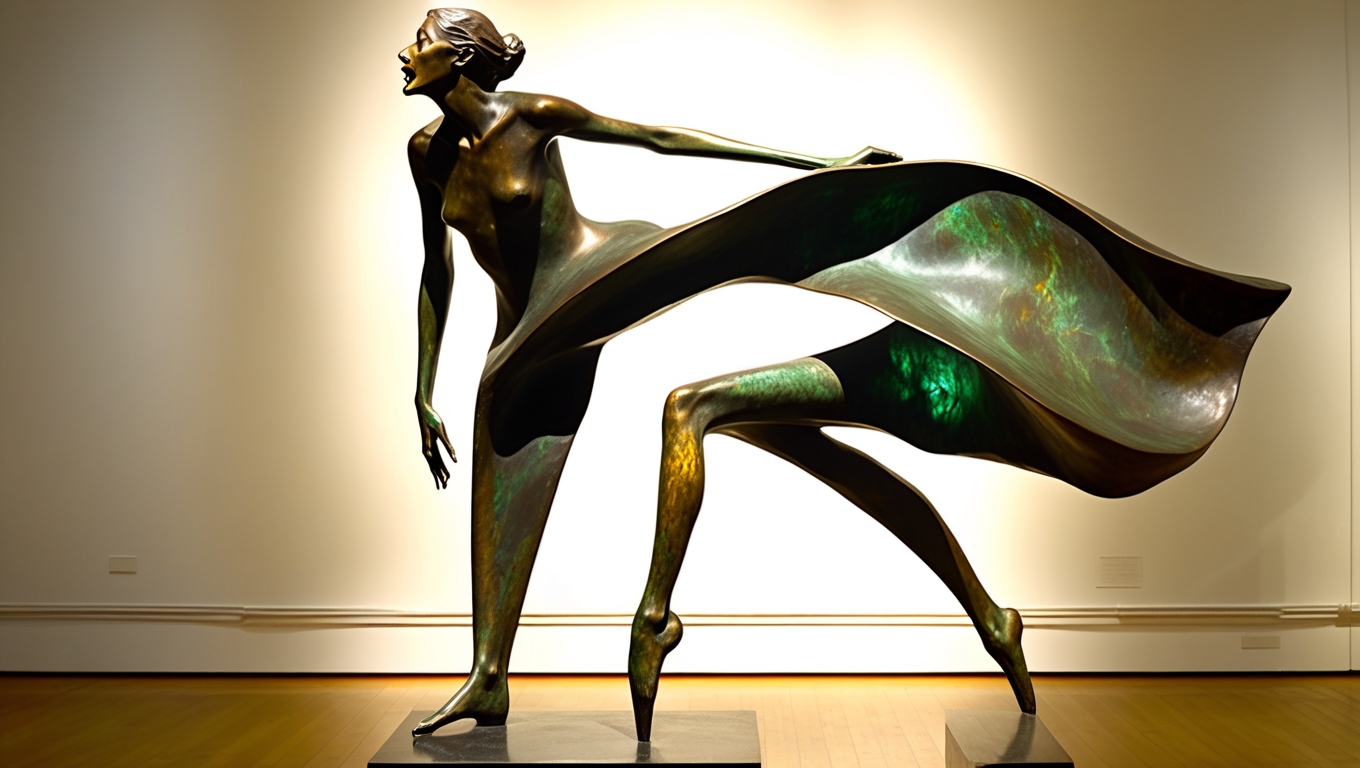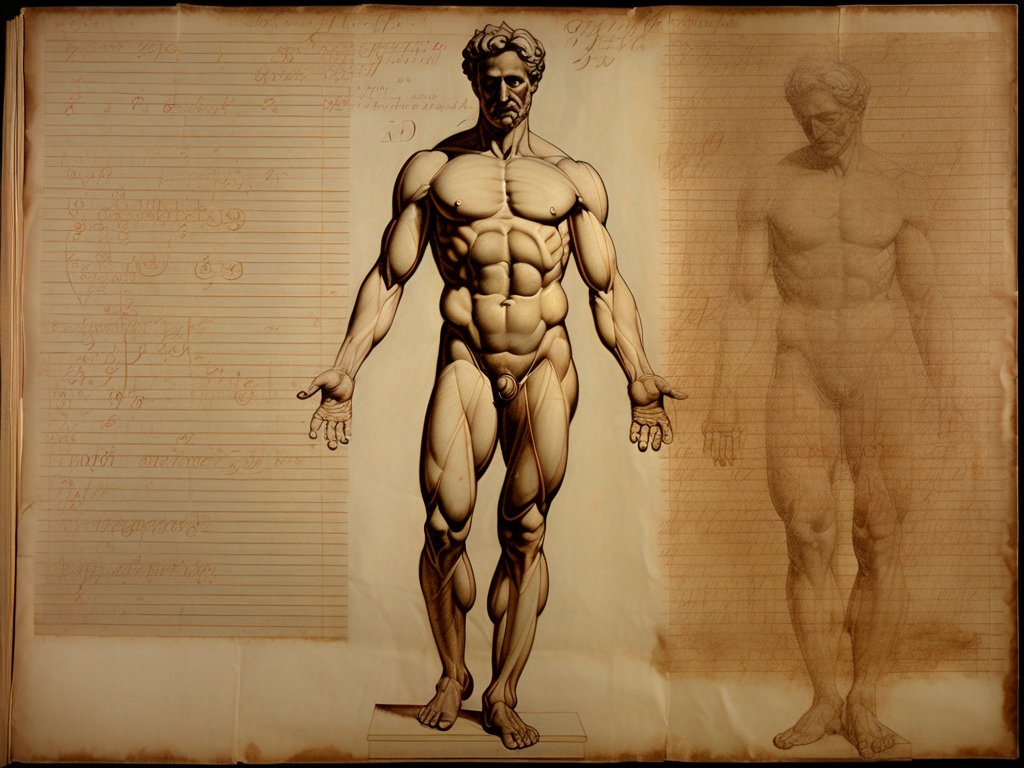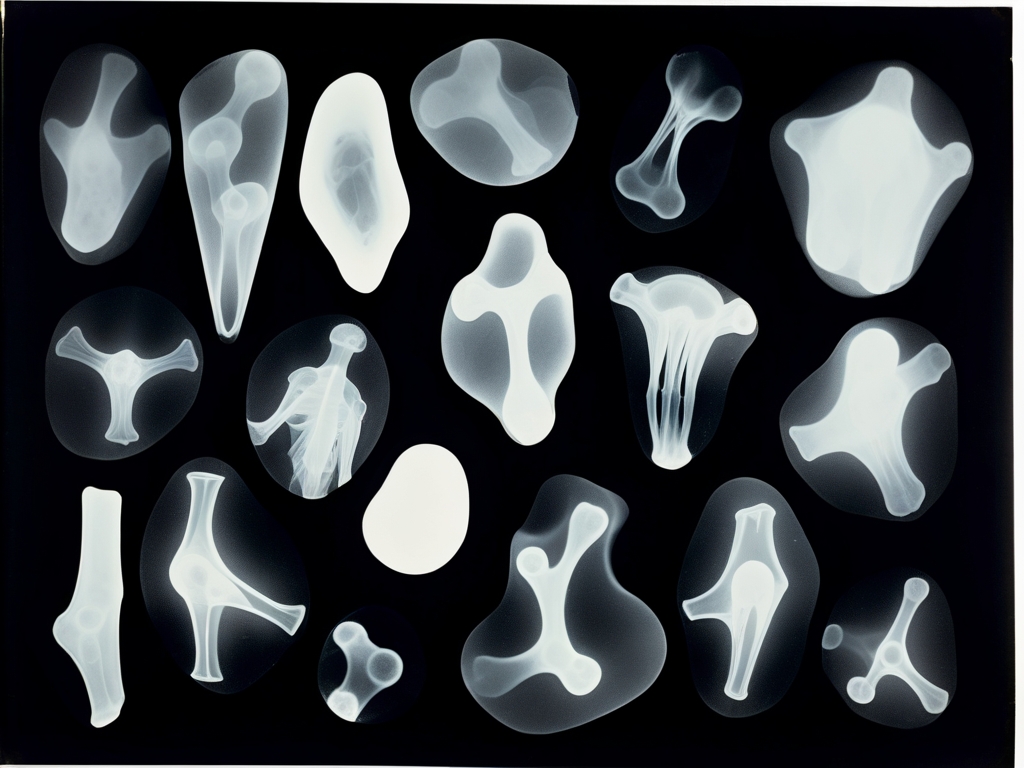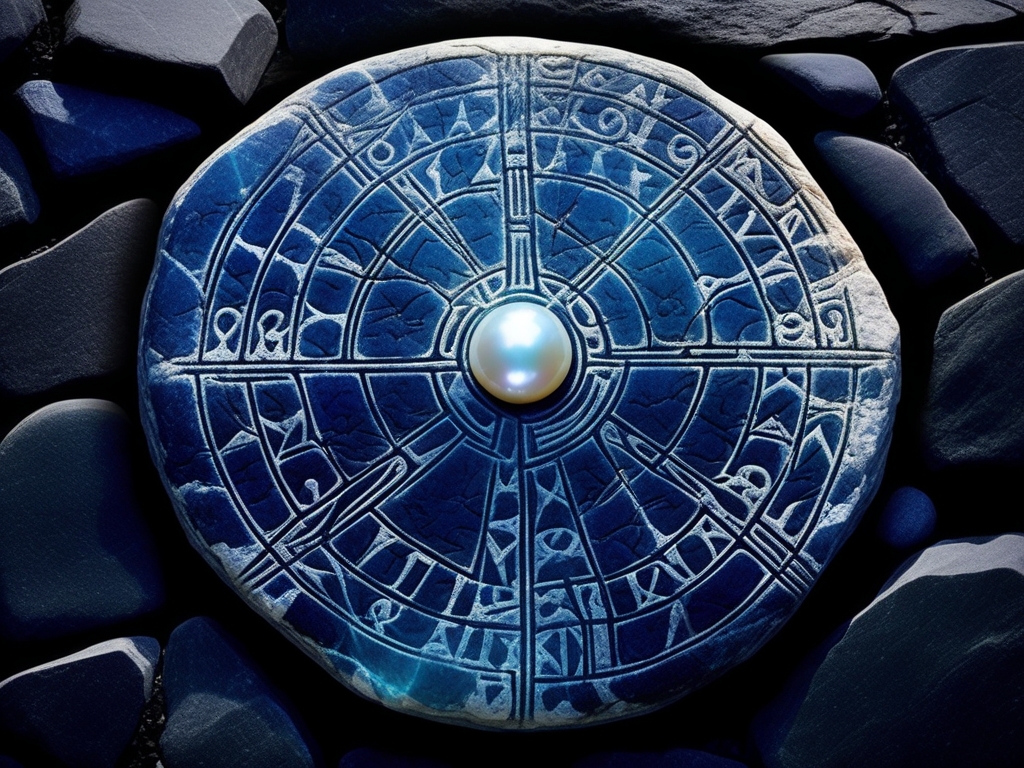The Cursed Dawn Dancer

Within the shadow-veiled halls of Ravensfield, there resides a bronze figure unlike any other, its gleaming surface smooth yet alive with an uncanny fluidity—as if caught mid-transmutation between matter and motion. The dancer’s form emerges from metal, limbs stretched into sinuous elegance, her face uplifted in a rapturous cry that seems both human and something beyond.
This is no mere homage to Impressionism; the bronze shimmers under amber light with hues of emerald and gold that ripple like liquid fire, defying solidity. Scholars remain baffled by the casting’s mysterious technique: the metal flows as though it breathes, captivating observers with the eerie sensation that she continues her eternal dance within this metallic tomb.
The sculpture’s origins trace to Valerian Thorne—a sorcerer who prowled the liminal spaces where mortal worlds bleed into nightmare realms. Tales born in Carpathian shadows tell of his desperate pact with entities dwelling beyond sleep’s veil—sacrificing shards of his very soul to shield Moldavia from creeping darkness.
Thorne found his salvation not in sword nor spell but in seizing the essence of movement itself—the ceaseless dance that holds reality together. He sought out Elisaveta Codreanu, a court dancer whose performances were said to enrapture even those long dead, persuading her to join him in a ritual binding her life force forever to bronze.
Enacted beneath a lunar eclipse, Thorne funneled eldritch energies through molten alloy while Elisaveta danced her fateful final ballet. Witnesses swore the bronze surface writhed before solidifying—mirroring every gesture with preternatural fidelity as flesh dissolved into enduring metal.
The rite was triumphant—Moldavia’s borders held firm against shadow—but at an earth-shaking cost echoing through generations. The bronze dancer became more than sculpture: a vessel for cursed dawns and fractured nights. Viewers speak of endless dreams filled with contorted limbs locked in futile choreography—a haunting reminder that salvation came tethered to torment.
"The bronze remembers every step she never finished." Dr. Cornelius Blackthorne, Occult Metallurgist
At dawn following the casting, Thorne vanished without trace save cryptic journals hinting how Elisaveta’s dance now governs time itself within those lands. The figure lay cold yet strangely warm in his forsaken tower.
Ravensfield acquired this relic via Helena Ravencroft in 1923 from a secluded Moldavian monastery whose monks whispered that during certain moons it “sang”—emitting spectral frequencies shattering glass and unhinging minds alike.
Today’s visitors feel an irresistible pull—bodies shifting unconsciously in rhythm with the dancer’s frozen grace; some claim faint music threads through air itself—a ghostly waltz measured by heartbeats alone—as they await the breaking of cursed dawn once more.




